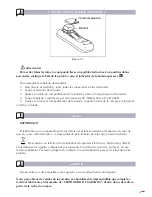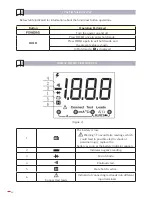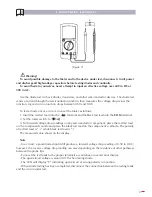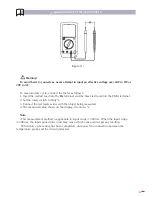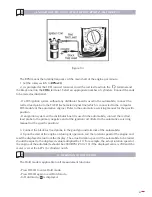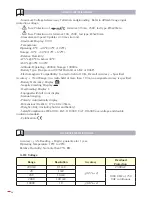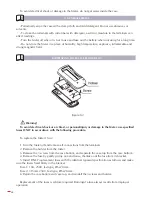
37
E. DIODE TESTING (SEE FIGURE 7)
(figure 7)
Warning!
To avoid possible damage to the Meter and to the device under test, disconnect circuit power
and discharge all high-voltage capacitors before testing diodes and continuity.
To avoid harm to yourselves, never attempt to input an effective voltage over 60V in DC or
30V in AC.
Use the diode test to check diodes, transistors, and other semiconductor devices. The diode test
sends a current through the semiconductor junction, then measures the voltage drop across the
junction. A good silicon junction drops between 0.5V and 0.8V.
To test a diode out of a circuit, connect the Meter as follows:
1. Insert the red test lead into the
terminal and theblack test lead into the
COM
terminal.
2. Set the rotary switch to
.
3. For forward voltage drop readings on any semiconductor component, place the red test lead
on the component’s anode and place the black test lead on the component’s cathode. The polarity
of red test lead is “+” while black test lead is “-“.
The measured value shows on the display.
Note
- In a circuit, a good diode should still produce a forward voltage drop reading of 0.5V to 0.8V;
however, the reverse voltage drop reading can vary depending on the resistance of other pathways
between the probe tips.
- Connect the test leads to the proper terminals as said above to avoid error display.
- The open-circuit voltage is around 2.7V when testing diode.
- The LCD will display “
1
” indicating open-circuit or wrong polarity connection.
- When diode testing has been completed, disconnect the connection between the testing leads
and the circuit under test.
Содержание egatronic 51259
Страница 50: ...50...



